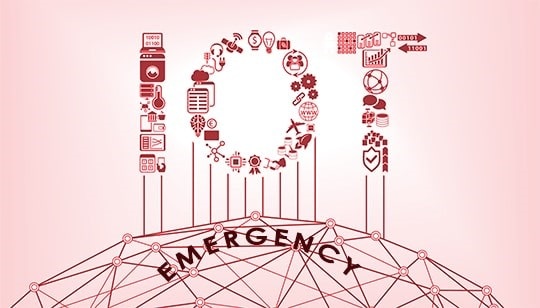Aug 6 2019
Since the Internet has matured, society has become more interconnected, as have the devices used to enhance everyday lives. This has led to the emergence of the so-called "Internet of Things" (IoT), in which autonomous devices as well as people are now interconnected in and across private, public, and industrial spaces.

IoT technologies are invading all application domains including services relevant to emergency situations with a scope wider than IoT connectivity and communication systems. To address this topic, the ETSI Special Committee EMTEL (emergency communications) has just released a report, ETSI TR 103 582, studying use cases and communications involving IoT devices in the provision of emergency situations and providing recommendations on standardization requirements that could enhance the safety of these communications. The report was prepared by a group of experts possessing a mix of both IoT and emergency communications competencies.
ETSI TR 103 582 considers communications involving IoT devices in all types of emergency situations, such as emergency calling, mission critical communications, Public Warning System communications and adds a new emergency communications domain identified as automated emergency response, where IoT devices can act after receiving a trigger to prevent hazardous situations. A set of eight exemplary use cases illustrate how such communications can be used to provide additional/enhanced information for communicating parties involved in such situations. For example, they cover the case where a smoke detector in a rubbish container sends an emergency message in the event of a fire, sending potentially in parallel a real-time emergency video. Another case could also be that an IoT device turns off immediately a gas tap or slows down a high-speed train when it receives an earthquake public warning (automated response).
ETSI TR 103 582 also helps prepare the potential standardization requirements enabling a safe operation of these communications. The use cases are analyzed from the point of view of potential failures putting safety at risk. Potential means to prevent these points of failure are identified, the impact of these use cases on existing or future standards is assessed and recommendations for requirements against EMTEL existing specifications for each domain are provided. Other IoT standardization stakeholders also receive suggestions to revise their specifications in order to support the emergency communications requirements.
“The ETSI Report prepares the requirements for communications involving IoT devices in all types of emergency situations”, says Michelle Wetterwald, an expert from the ETSI EMTEL committee. “It also leverages from benefits of IoT with data gathering without human interaction, objectivity of IoT data, fast and fail-safe information sharing, translation of human languages not required, real-time data transmission and operation in dangerous environments.”